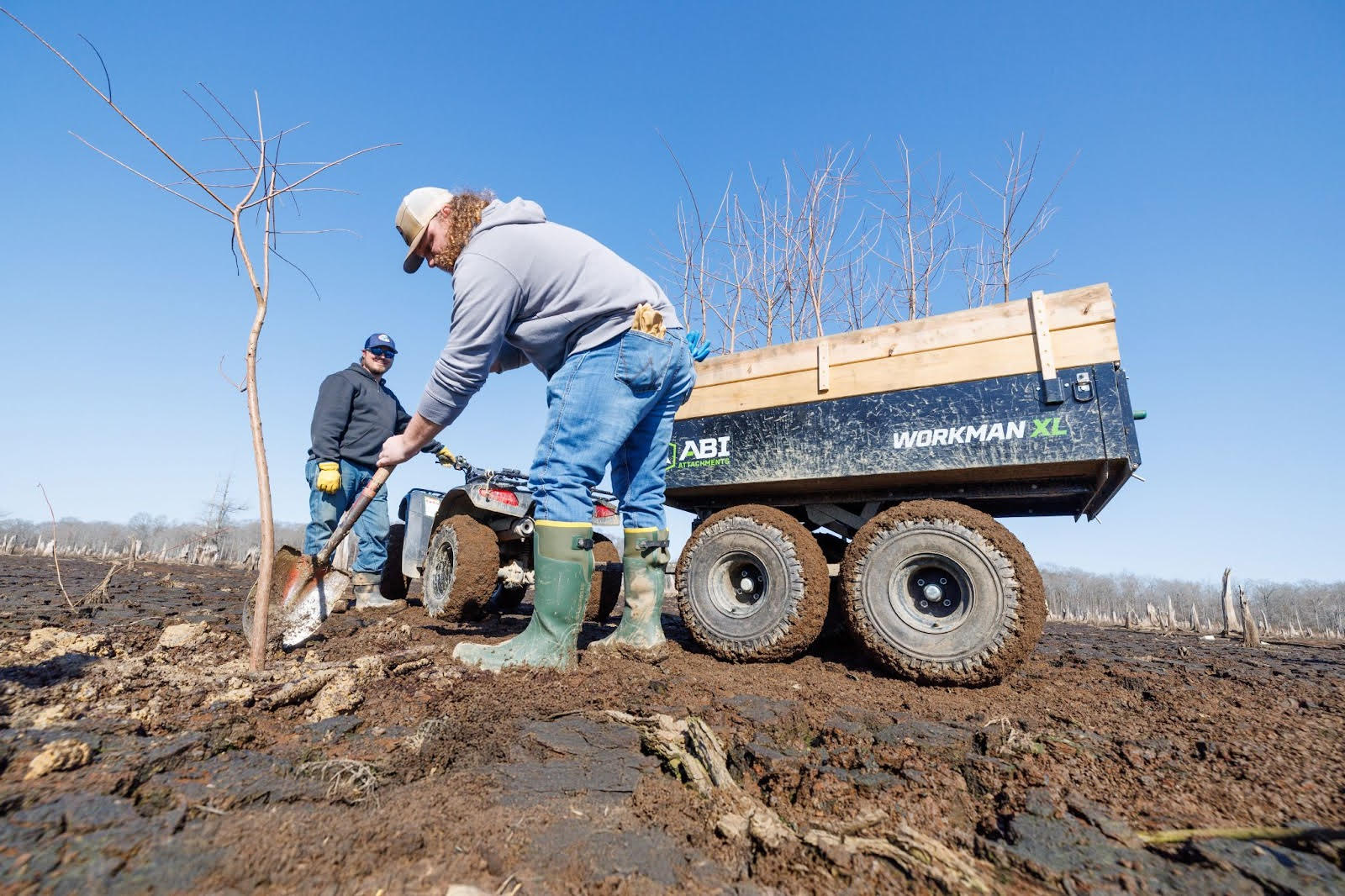AGFC hatcheries produce more than 7.4 million fish in 2018
ON 12-19-2018

Dec. 19, 2018
Randy Zellers
Assistant Chief of Communications
HOT SPRINGS — The Arkansas Game and Fish Commission stocked 7,451,885 fish to supplement The Natural State’s waters and provide increased opportunity for anglers in 2018.
According to hatchery reports compiled by the AGFC Fisheries Division’s Aquatic Culture Section, 18 fish species were produced on AGFC hatcheries and nursery ponds. These fish weighed an approximate 690,171 pounds, which was spread out among dozens of fisheries in Arkansas. Three size ranges of fish were stocked throughout the year — fingerlings, which measure 1 to 3 inches, yearlings, which are larger than 3 inches, and adults, which are catchable-size and usually are retired brood stock that were used for hatchery and nursery pond production.
While the numbers are impressive, Tommy Laird, assistant chief of fisheries, says it’s important to look at the relative size of the fish stocked in addition to the total number.
“We stocked 515,036 striped bass last year, but all of them were fingerlings, which have a low survival rate,” Laird said. “Meanwhile, we stocked nearly 1.2 million Florida-strain largemouth bass, with 154,931 yearlings in the mix, which will have exponentially higher survival rates to adulthood. We also added 2,320 pure Florida-strain adults into lakes designated to receive them, which directly contribute as brood fish in those systems immediately.”
In addition to the sportfish stocked in Arkansas waters, hatcheries produced 2.1 million forage fish of different species to give stocked fish a jump start on growth and to boost the productivity in less fertile fisheries.
“A lot of our lakes are getting older and are less productive than in years past,” Laird said. “There also may be some lakes that have a shad die-off from a hard winter. In these situations, we can supplement the lake’s forage species with new fish to serve as broodstock and help rebuild the forage base.”
Threadfin shad stockings have increased in recent years to help boost forage populations, with roughly 232,000 threadfin shad stocked directly into Arkansas reservoirs, either through hatchery trucks or through nursery ponds connected to the lakes.
“We also have to provide food for the predator fish we grow, like largemouths and crappie,” Laird said. “We will grow fathead minnows and golden shiners to feed the hatchery fish, and in some cases, we’ll grow a crop of fathead minnows in a nursery pond near a lake, let them grow, and then stock fingerling bass into the pond in June to create advanced bass fingerlings and yearlings. These bass are much larger when they go into the lake.”
Laird stresses that stocking sport fish is not a magic bullet to dramatically increase the amount of fish in an already healthy system.
“I’ve been told by our aquatic habitat biologists that on a bad year, the spawning habitat on Beaver Lake alone still can produce 7 to 8 million bass fingerlings,” Laird said. “Even if we converted an entire hatchery to nothing but largemouth bass production, we would have a hard time matching that kind of production. And that’s just one lake in Arkansas.”
Instead, stockings play a vital role in boosting populations in smaller bodies of water and those that lack the amount of spawning habitat available to withstand extreme angling pressure.
“We can also work to boost some of the genetic component of some fisheries, like with our Florida bass stocking program,” Laird said. “The introduction of Florida bass genetics can help increase growth rates and overall size of fish, but the actual percentage of pure Florida bass is still going to be relatively low because the fertile lakes where we stock them are already producing high rates of largemouths.”
Another area where stocked fish shine is through the many fishing events and promotions the AGFC does to introduce new anglers to the world of fishing. More than 271,000 catchable-size catfish and 597,575 catchable-size rainbow trout were stocked in 2018, most of which were placed in smaller bodies of water specifically to hook new anglers with some fast success during the year.
“Nearly all of our catfish are going to fishing derbies, Family and Community Fishing locations and smaller ponds to help recruit new anglers and give people in Arkansas the opportunity to fish wherever they live,” Laird said. “Many of the catchable-size trout go to the same locations during winter when the water is cold enough to support them. We also stock quite a few catchable-size trout in tailwater fisheries below Lakes Ouachita, Greeson, Hamilton and Catherine for anglers to enjoy trout fishing without driving all the way to the White or Little Red rivers.”
Fish Stocked in 2018 by Species:
Northern-Strain Largemouth Bass
Fingerling — 401,298
Yearling — 24,859
Adult — 120
Florida-Strain Largemouth Bass
Fingerling — 1,015,413
Yearling — 154,931
Adult — 2,320
Smallmouth Bass
Fingerling — 53,175
Adult — 72
White Crappie
Fingerling — 120,000
Adult — 400
Black Crappie
Yearling — 22,901
Adult — 250
Blacknose Crappie
Yearling — 87,278
Adult — 250
Bluegill
Fingerling — 501,581
Adult — 8,739
Redear Sunfish
Fingerling — 479,300
Adult — 150
Channel Catfish
Fingerling — 273,864
Yearling — 319,552
Catchable-size — 289,376
Flathead Catfish
Fingerling — 8,695
Yearling — 14,664
Rainbow Trout
Catchable-size — 597,575
Striped Bass
Fingerling — 515,036
Hybrid Striped Bass
Fingerling — 49,219
Walleye
Fingerling — 716,510
Saugeye
Fingerling — 31,615
Fathead Minnows
Adult — 649,000
Threadfin Shad
Yearling — 187,106
Adult — 45,188
Golden Shiners
Fingerling — 265,447
Recent News
Subscribe to Our Weekly Newsletter E-mails
Don’t miss another issue. Sign up now to receive the AGFC Wildlife Weekly Newsletter in your mailbox every Wednesday afternoon (Waterfowl Reports are published weekly during waterfowl season and periodically outside the season). Fishing Reports arrive on Thursdays. Fill in the following fields and hit submit. Thanks, and welcome!


